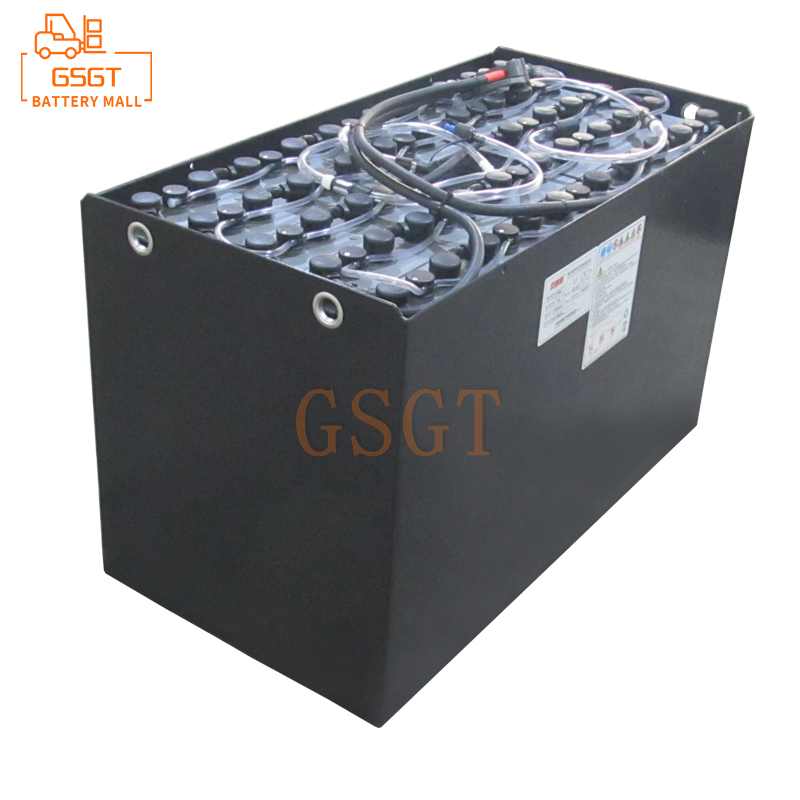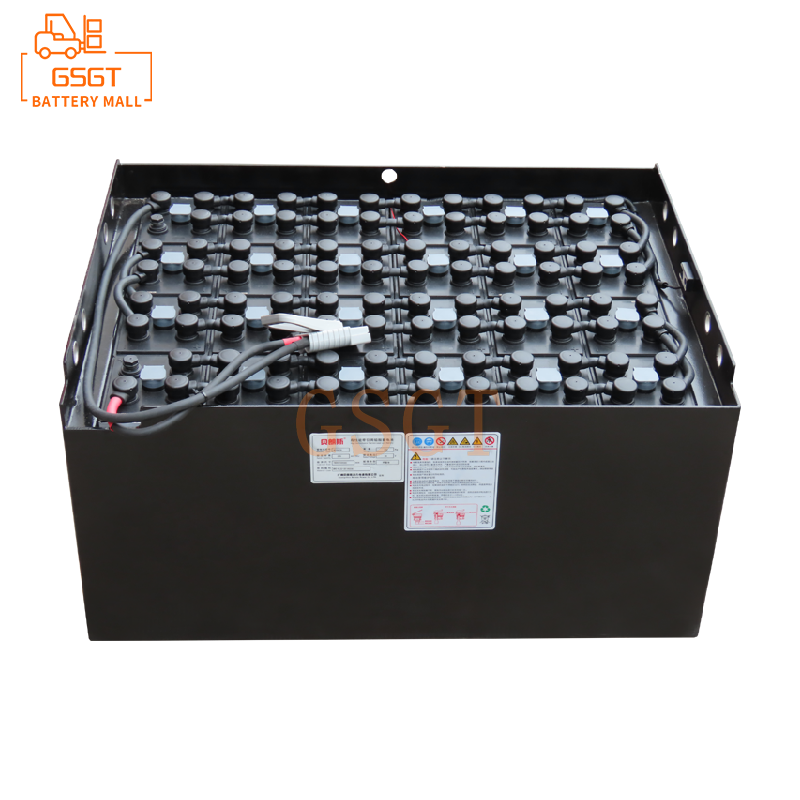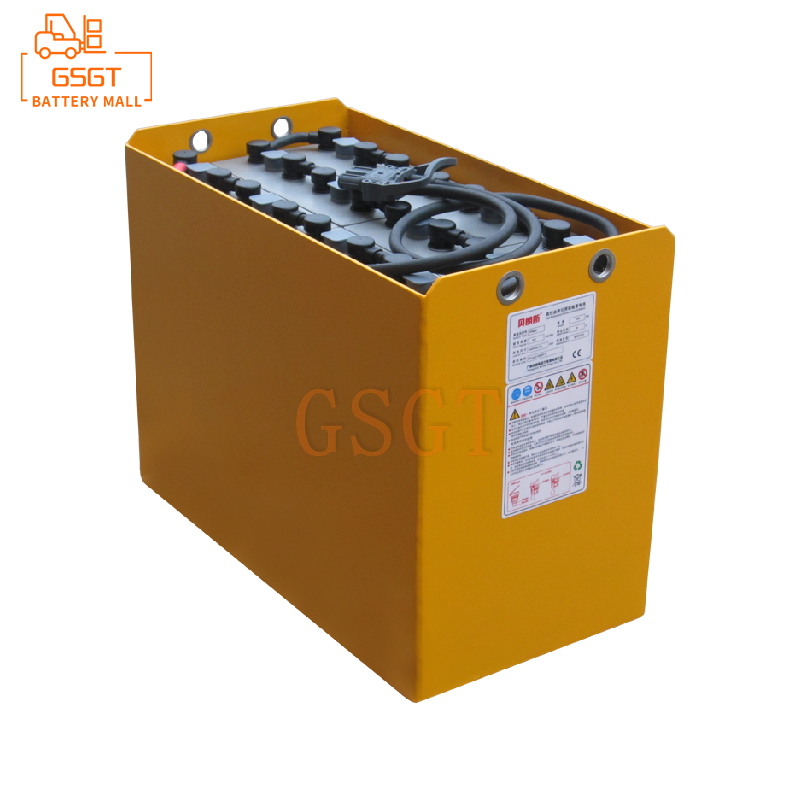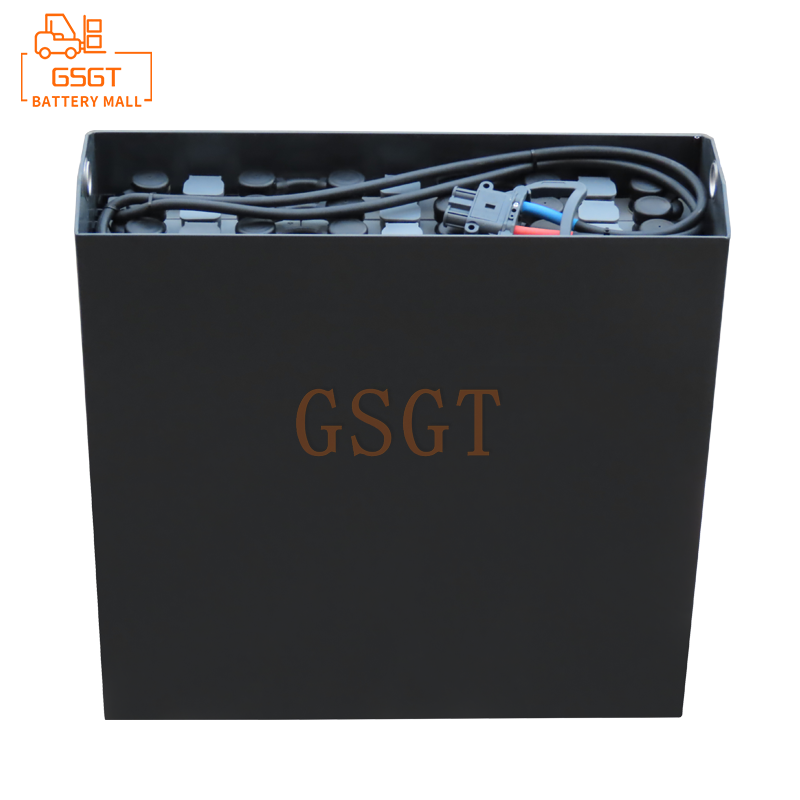Time:2025-06-14 11:20:17
Browse:632
Introduction
In modern logistics and industrial production, forklifts, as key material handling equipment, their operational efficiency and stability directly affect the production and operation costs and benefits of enterprises. Lead-acid batteries, as one of the important sources of power for forklifts, have occupied an important position in the forklift power market due to their advantages such as mature technology, relatively low cost, and good high-rate discharge performance. However, there are numerous types of lead-acid batteries on the market with complex parameters. How to precisely select the appropriate lead-acid battery for forklifts in different working scenarios has become an important issue for enterprises. This article will deeply explore the key points for selecting lead-acid batteries for forklift power in different scenarios, providing scientific and practical decision-making basis for enterprises.
Analysis of the Working Principle and Characteristics of Lead-Acid Batteries
Working principle
The operation of lead-acid batteries is based on the reversible chemical reaction between lead and its oxides and the sulfuric acid electrolyte. During the discharge process, lead dioxide at the positive electrode and lead at the negative electrode react with sulfuric acid to form lead sulfate and release electrons, thereby generating an electric current to power the forklift. During charging, under the influence of an external power source, lead sulfate decomposes back into its original form, restoring the battery's power.
Performance characteristics
1. ** Energy Density ** : The energy density of lead-acid batteries is relatively low, which means that when storing the same amount of energy, lead-acid batteries have a larger volume and weight. However, for equipment like forklifts that have a certain tolerance for space and weight and focus on instantaneous large current output, this characteristic is not a decisive disadvantage.
2. ** Charge and Discharge Characteristics ** : The discharge curve of lead-acid batteries is relatively flat, which can provide stable voltage for a long time and meet the stable operation requirements of forklifts. However, its charging speed is relatively slow, and the regular charging time usually takes 6 to 8 hours or even longer. This to some extent limits the continuous operation time of forklifts and puts forward special requirements for charging facilities and operation arrangements.
3. ** Cycle life ** : The cycle life of lead-acid batteries is generally around 1,500 times, which depends on the battery quality, usage environment and charging and discharging methods. Frequent deep discharges can significantly shorten its lifespan. Therefore, reasonably controlling the depth of discharge is crucial for extending the battery's service life.
4. ** Cost Advantage ** : Compared with other types of batteries such as lithium batteries, lead-acid batteries have abundant raw materials, mature production processes, and lower manufacturing costs. This gives lead-acid batteries a significant advantage in terms of initial procurement costs, making them particularly suitable for enterprises with limited budgets and cost sensitivity.
The key factors to be considered in model selection
Working environment factors
1. ** Temperature Impact ** : In high-temperature environments, battery chemical reactions accelerate, and the water in the electrolyte evaporates quickly, which can easily lead to sulfation of the plates and shorten the battery's lifespan. In a low-temperature environment, the internal resistance of the battery increases, the viscosity of the electrolyte rises, the ion diffusion rate slows down, the battery capacity and output power significantly decrease, making it difficult for forklifts to start and reducing their working efficiency. For instance, in high-temperature workshops such as steel mills, lead-acid batteries with good high-temperature resistance, special heat dissipation design and high-temperature resistant electrolyte should be selected. Forklifts operating in low-temperature environments such as cold storage facilities need to be equipped with batteries that have good low-temperature performance and special additives added to lower the freezing point of the electrolyte.
2. ** Humidity and Corrosiveness ** : A humid environment can easily cause corrosion of the battery casing and connecting parts, reducing battery performance and safety. In places with high humidity or corrosive gases and liquids such as ports and chemical plants, lead-acid batteries with good sealing performance and corrosion-resistant shell materials should be selected, such as those with a sealed design and shells made of corrosion-resistant plastic.
3. ** Dust and Cleaning Requirements ** : In environments with a lot of dust such as cement plants and flour mills, dust is prone to accumulate on the surface of batteries, affecting heat dissipation and possibly entering the battery interior through ventilation holes, contaminating the electrolyte and accelerating battery aging. At this point, batteries with a high protection level and dust-proof design should be selected, and daily cleaning and maintenance should be strengthened.
Work intensity and duration
1. ** Work Intensity ** : The work intensity of forklifts can be classified into light load, medium load and heavy load. Light-load operations, such as handling relatively light goods in small warehouses, have relatively lower requirements for battery capacity and output power. Medium-load operations involve frequent handling of medium-weight goods, which requires batteries to have a certain capacity and good continuous discharge capability. Heavy-duty operations such as handling heavy containers in ports and logistics parks require batteries to provide strong instantaneous current and high capacity to meet the frequent start-up, acceleration and climbing needs of forklifts. For example, forklifts that work for more than 8 hours a day, frequently handle heavy objects weighing over 3 tons, and perform climbing operations are recommended to choose large-capacity batteries, such as 48V 600Ah and above specifications. For light-load and short-time operation scenarios, such as sporadic handling in small warehouses, a 48V 300-400Ah battery can meet the requirements.
2. ** Working hours ** : If the forklift needs to operate continuously for a long time, such as running in multiple shifts, or frequently handling heavy loads and traveling long distances, a battery with large capacity and long endurance should be selected. For forklifts that operate intermittently and for short periods of time, small-capacity batteries may be sufficient to meet the requirements. If the enterprise's charging facilities are complete and support forklifts to be charged at any time, medium-capacity batteries can be selected to maintain operation through multiple short-time charges. If the charging conditions are restricted and centralized charging can only be carried out at night, a large-capacity battery should be selected to ensure that the forklift operates without power interruption throughout the day. At the same time, attention should be paid to the battery charging duration. Some large-capacity battery fast charging technologies can shorten the charging time and improve the utilization rate of the equipment.
Forklift types and specifications
Different types and specifications of forklifts have different requirements for battery voltage, capacity, size and weight, etc. It is necessary to refer to the technical specification sheet or nameplate of the forklift to determine. Counterbalanced forklifts, due to the need to carry heavy goods, have higher requirements for battery capacity and output power. Electric pallet trucks have a compact structure and limited space, which requires a small battery size that can meet their working needs. The rated load capacity, maximum lifting height, traveling speed and other parameters of forklifts are also related to the battery selection. The greater the rated load, the higher the lifting height, the faster the traveling speed, and the greater the required battery capacity and output power.
Selection process and method
Clarify the operation requirements of forklifts
1. Record in detail the weight range, average weight and maximum weight of the goods handled by the forklift on a daily basis to determine the operation intensity level and provide a basis for determining the battery capacity and output power.
2. Calculate the daily and weekly working hours, shifts, and whether there is continuous long-term operation of the forklift, and clearly define the requirements for battery endurance.
3. Understand the forklift's driving path, including whether there are frequent operations such as climbing slopes and turning, as well as the distance traveled. These factors will affect the battery's energy consumption and the demand for instantaneous power.
4. Determine the operating environment parameters of the forklift, such as temperature, humidity, dust concentration, etc., in order to select the battery that is suitable for the specific environment.
Match battery parameters
1. ** Voltage Selection ** : Ensure that the battery voltage is consistent with the electrical system voltage of the forklift. Common forklift battery voltages include 24V, 36V, 48V, 72V, etc. Voltage mismatch can cause forklifts to fail to operate normally and even damage electrical equipment.
2. ** Capacity Calculation ** : Estimate the battery capacity based on the intensity and duration of the operation. For instance, if a forklift has an average working current of 50A, operates for 8 hours a day, and the battery discharge depth is set at 80%, then the required battery capacity is 50×8÷0.8 = 500Ah. When actually selecting the model, a certain margin also needs to be considered to deal with unexpected situations and battery performance degradation.
3. ** Size and Weight Matching ** : Measure the length, width and height of the forklift battery compartment, select batteries that can fully match the battery compartment, and ensure stable installation without affecting the normal operation of other forklift components. At the same time, consider the impact of battery weight on the counterweight of the forklift to avoid unstable center of gravity of the forklift due to overly heavy or light batteries, which may affect driving safety and operational performance.

$3050

$5710

$1690

$1200

MESSAGE
Professional And Efficient
Security
Affordable Price
Professional Services